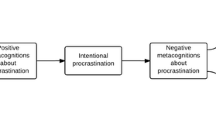Abstract
Recent evidence suggests that parasuicide (deliberate self-harm) should be considered in terms of ‘normal’ rather than ‘abnormal’ behaviour. This study aimed to address this assertion by applying a social cognition model, for the first time, to parasuicidal behaviour. An extended theory of planned behaviour (TPB) model was tested on 55 individuals drawn from hospital and non-hospital populations. Thirty-eight percent of the sample (n=21) reported a history of deliberate self-harm. Findings supported the utility of the TPB: attitudes, subjective norm, self-efficacy, moral norm and anticipated affect discriminated significantly between those with and without a history of parasuicide. The extended TPB explained more than 50% of the variance associated with intentions to deliberately self-harm. These findings have considerable theoretical and practical implications for intervention. Future research should investigate the utility of the TPB employed within a prospective framework.
Similar content being viewed by others
References
Abrams, D., Hinkle, S., & Tomlins, M. (1999). Leaving Hong Kong?: The roles of attitude, subjective norm, perceived control, social identity and relative deprivation. International Journal of Intercultural Relations, 23, 319–338.
Ajzen, I. (1991). The theory of planned behavior. Organizational Behavior and Human Decision Processes, 50, 179–211.
Ajzen, I., & Fishbein, M. (1980). Understanding attitudes and predicting social behavior. Englewood Cliffs, NJ: Prentice-Hall.
Armitage, C. J., & Conner, M. (2000). Social cognition models and health behavior: A structured review. Psychology and Health, 15, 173–189.
Armitage, C. J., & Conner, M. (2001). Efficacy of the theory of planned behavior: A meta-analytic review. British Journal of Social Psychology, 40, 471–499.
Bandura, A. (1997). Self-efficacy: The exercise of control. New York: Freeman.
Conner, M., & Armitage, C. J. (1998). Extending the theory of planned behavior: A review and avenues for further research. Journal of Applied Social Psychology, 28, 1429–1464.
Conner, M., Norman, P. (Eds.) (1996). Predicting health behavior. Buckingham, UK: Open University Press.
Fishbein, M., & Ajzen, I. (1975). Belief, attitude, intention and behavior: An introduction to theory and research. Reading, MA: Addison-Wesley.
Godin, G., & Kok, G. (1996). The theory of planned behavior: A review of its applications to healthrelated behaviors. American Journal of Health Promotion, 11, 87–98.
Kreitman, N. (1977). Parasuicide. Chichester, UK: Wiley.
Liao, S., Shao, Y. P., Wang, H., & Chen, A. (1999). The adoption of virtual banking: an empirical study. International Journal of Information Management, 19, 63–74.
MacLeod, A.K., Rose, G.S. & Williams, J.M.G. (1993). Components of hopelessness about the future in parasuicide. Cognitive Therapy & Research, 17, 5, 441–455.
Manstead, A. S. R. (2000). The role of moral norm in the attitude-behavior relationship. In D. J. Terry & M. A. Hogg (Eds.), Attitudes, behavior and social context: The role of norms and group membership (pp. 11–30). London: Lawrence Erlbaum.
Michel, K. & Valach, L. (2001). Suicide as Goal-directed Action. In K van Heeringen (Ed.). Understanding Suicidal Behavior. Chichester, UK: Wiley & Sons.
O'Connor, R.C. & Sheehy, N.P. (2001). State of the art: Suicidal behavior. The Psychologist, 14, 20–24.
O'Connor, R.C. & Sheehy, N.P. (2000). Understanding Suicidal Behavior. Leicester: BPS Books.
O'Connor, R.C., Sheehy, N.P., & O'Connor, D.B. (2000). Fifty cases of general hospital parasuicide. British Journal of Health Psychology, 5, 83–95.
O'Connor, R.C., Sheehy, N.P. & O'Connor, D.B. (1999). The classification of completed suicide into subtypes. Journal of Mental Health, 8 (6), 629–637
Pokorny, A.D. (1993). Suicide prediction revisited. Suicide and Life-threatening Behavior, 23 (1), 1–10.
Richard, R., van der Pligt & J., de Vries, N. (1995). Anticipated affective reactions and prevention of AIDS. British Journal of Social Psychology, 34, 9–21.
Richard, R., van der Pligt, J., & de Vries, N. (1996). Anticipated affect and behavioral choice. Basic and Applied Social Psychology, 18, 111–129.
Secretary of State for Health (1998). Our Healthier Nation—A Contract for Health. HMSO: London.
Shneidman, E.S. (1996). The Suicidal Mind. Oxford University Press: New York.
van derPligt, J., & de Vries, N. K. (1998). Expectancy-value models of health behavior: The role of salience and anticipated affect. Psychology and Health, 13, 289–306.
Author information
Authors and Affiliations
Corresponding author
Rights and permissions
About this article
Cite this article
O’Connor, R.C., Armitage, C.J. Theory of planned behaviour and parasuicide: An exploratory study. Curr Psychol 22, 196–205 (2003). https://doi.org/10.1007/s12144-003-1016-4
Issue Date:
DOI: https://doi.org/10.1007/s12144-003-1016-4




